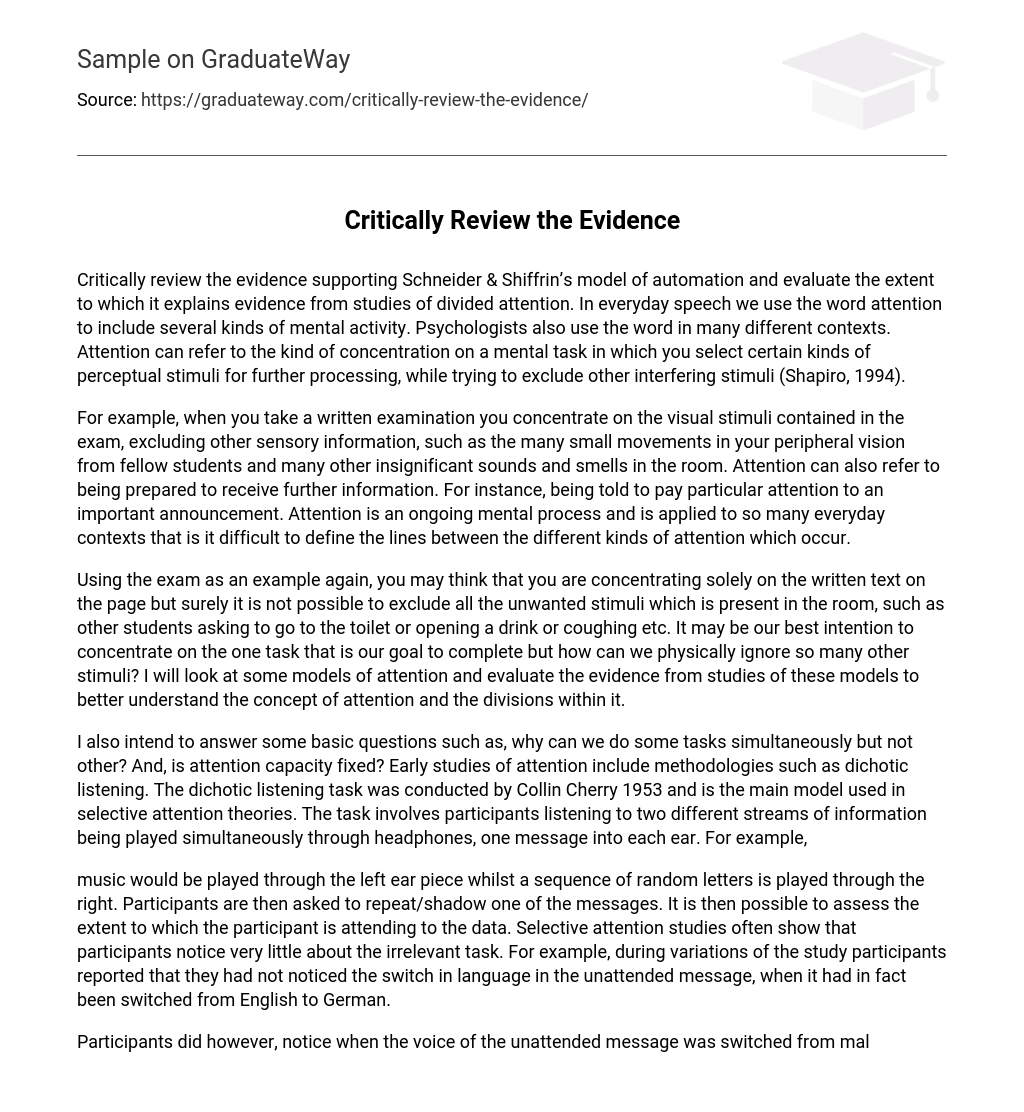Critically reviewing the evidence supporting Schneider & Shiffrin’s model of automation and evaluating the extent to which it explains evidence from studies of divided attention is important. In everyday speech, we use the word attention to include several kinds of mental activity. Psychologists also use the word in many different contexts. Attention can refer to the kind of concentration on a mental task in which you select certain kinds of perceptual stimuli for further processing while trying to exclude other interfering stimuli (Shapiro, 1994).
For example, during a written examination, you concentrate on the visual stimuli presented in the exam and exclude other sensory information such as small movements in your peripheral vision from fellow students, as well as insignificant sounds and smells in the room. Attention can also refer to being prepared to receive further information. For instance, being told to pay particular attention to an important announcement. Attention is an ongoing mental process that applies to so many everyday contexts that it is difficult to define the lines between different kinds of attention.
When taking an exam, it may seem like you’re only focused on the written text in front of you. However, it’s impossible to completely ignore other distractions in the room, such as students asking to use the restroom or coughing. Despite our best efforts, how can we block out so many stimuli? To better understand attention and its various components, I will examine different models and evaluate studies that provide evidence for these models.
I also intend to answer some basic questions, such as why we can do some tasks simultaneously but not others and whether attention capacity is fixed. Early studies of attention include methodologies like dichotic listening, which was conducted by Collin Cherry in 1953 and is the main model used in selective attention theories. The task involves participants listening to two different streams of information being played simultaneously through headphones, with one message going into each ear.
During this experiment, music is played through the left earpiece while a sequence of random letters is played through the right. Participants are then asked to repeat or shadow one of the messages. This allows researchers to assess how much attention the participant is paying to the data. Studies on selective attention often show that participants notice very little about irrelevant tasks. For instance, during variations of this study, participants reported not noticing a switch in language in the unattended message when it was actually switched from English to German.
Participants did, however, notice when the voice of the unattended message was switched from male to female. Therefore, some characteristics of the unattended message can be detected. Broadbent’s model of attention supports these basic findings from the dichotic listening task.
Broadbent’s model is constructed of two main stages. The first is sensory input (i.e., visual or auditory stimuli), which is then converted into memory. This memory store is not short-term but rather a very temporary one.
Information is then filtered, analyzed and selected based on physical characteristics only and not meaning.
The model supports the findings of the dichotic listening task by indicating that changing the message from a male to female voice is a physical characteristic. The second stage of the model occurs after the filter, which processes selected input for attention, such as semantic analysis to respond to information. However, the filter mechanism operates on an all-or-nothing basis. The model suggests that only one piece of information is analyzed for meaning, but distractions can capture our attention simultaneously.





